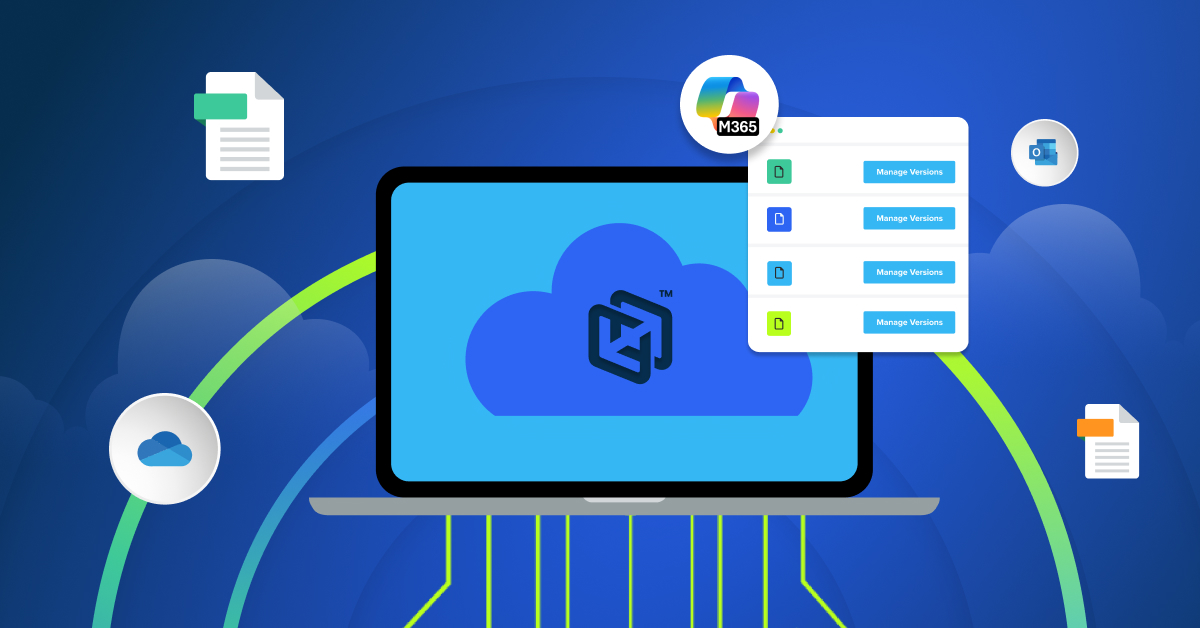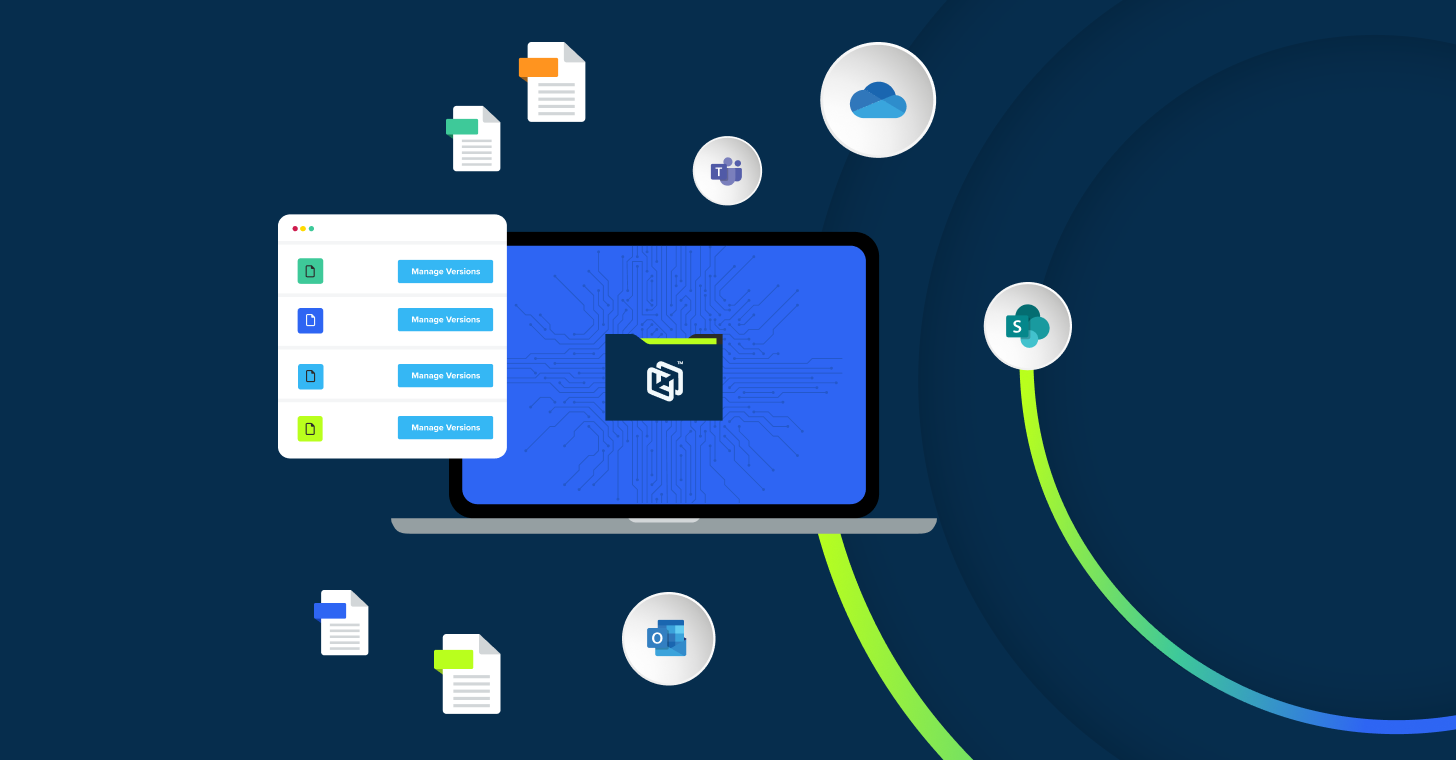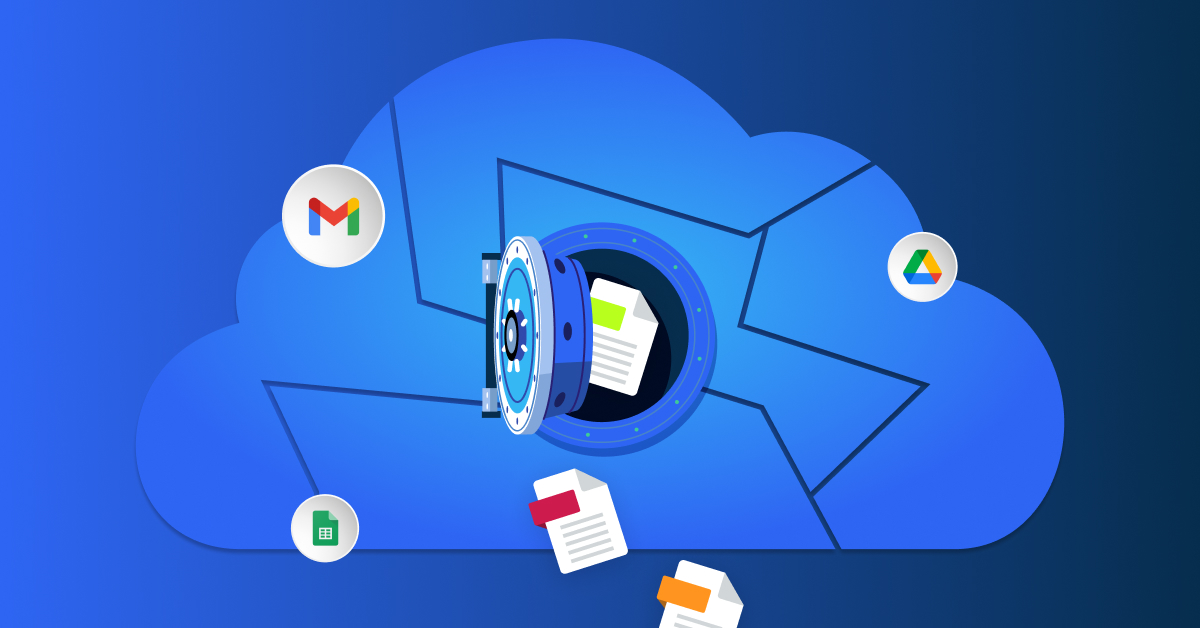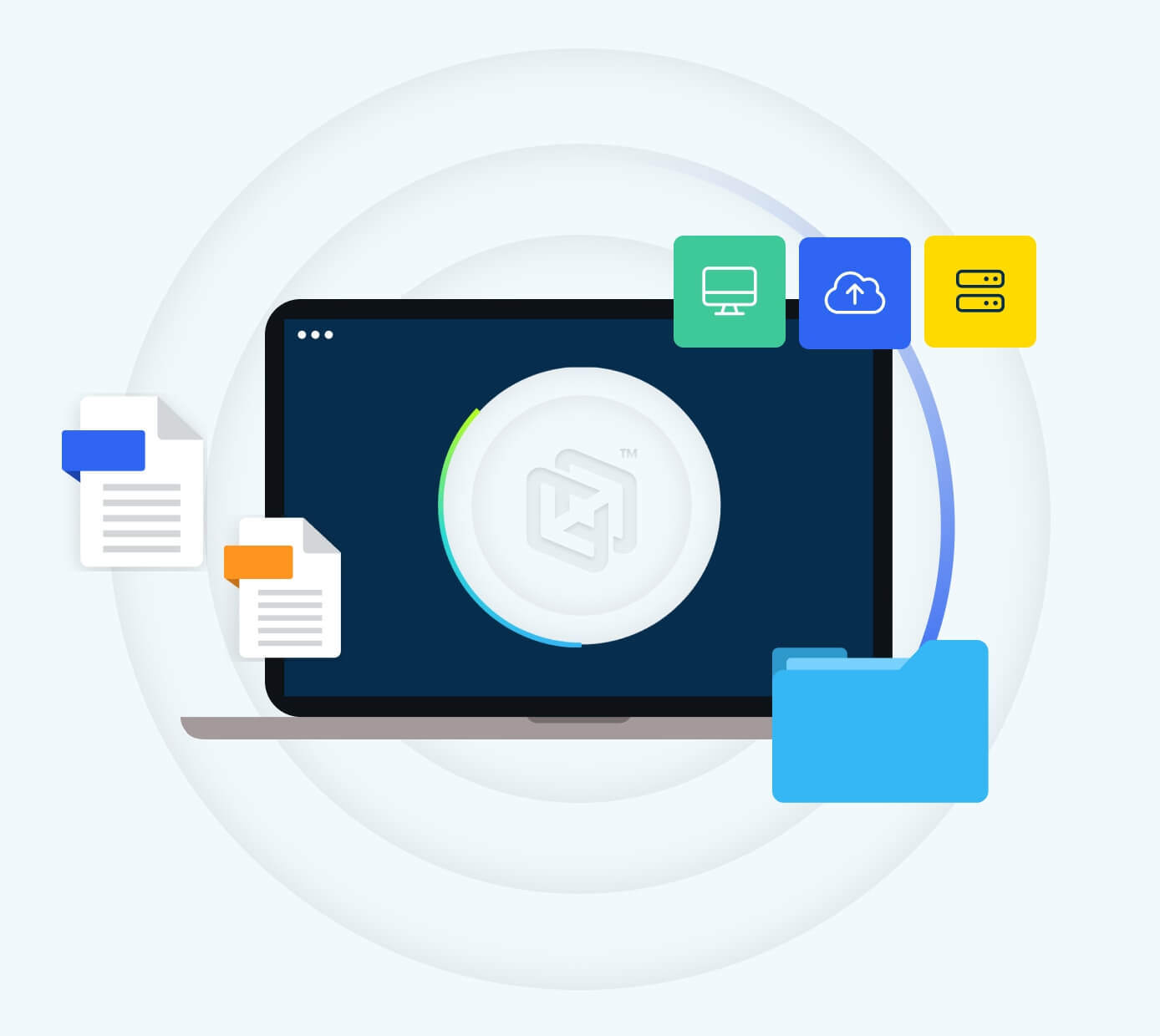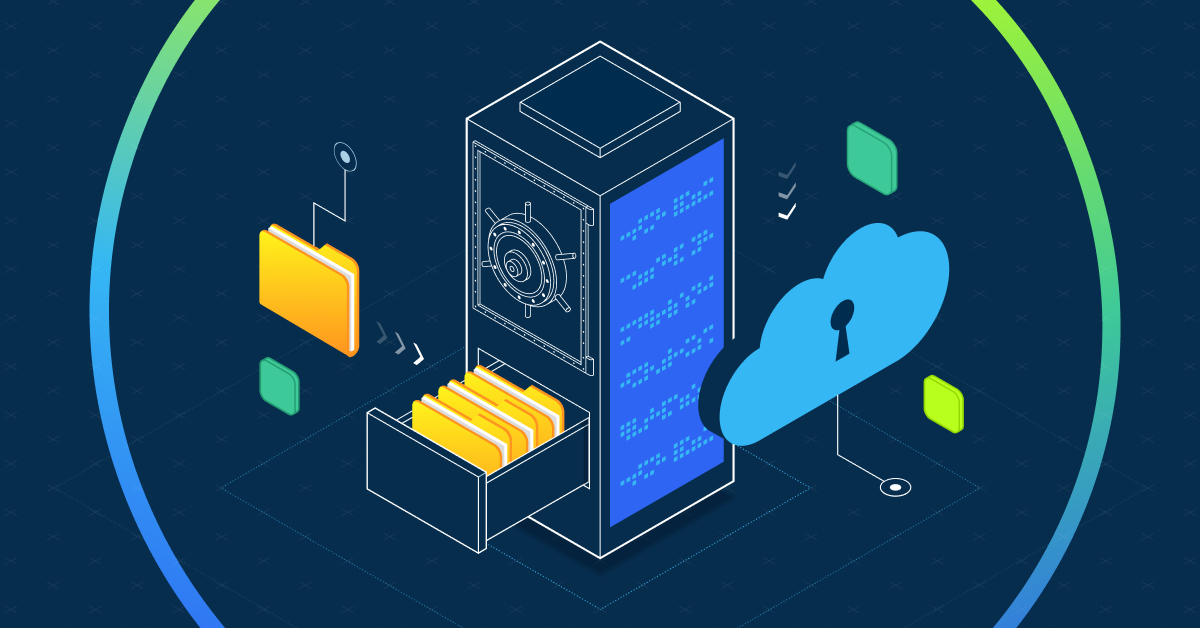
The average enterprise data loss incident now costs $8.6 million. For U.S. enterprises, the numbers run even higher—incidents regularly exceed $10 million, marking an all-time high for data loss costs.
These aren’t rare events. They’re happening with increasing frequency across every industry sector. For Fortune 500 companies and large enterprises, a single data loss event poses a significant financial threat that warrants board-level attention.
Behind these numbers is a web of cascading downstream costs: lost revenue, recovery operations, regulatory penalties, and customer defection combine to create financial damage that extends well beyond the initial incident. Understanding exactly how these costs accumulate—and how to calculate your organization’s specific risk exposure—is the first step toward building an effective defense.
Minute by minute, how a data loss event unfolds
Let’s walk through what actually happens when a Fortune 500 financial services firm experiences a major data loss incident. This hypothetical timeline, based on dozens of real incidents, shows how quickly costs compound:
3:47 AM — Automated security alerts detect unusual encryption activity across the network. The ransomware has already encrypted primary database servers containing customer transaction data. Night shift security analysts confirm that 1,200 endpoints have been compromised, and the infection is spreading.
4:15 AM — Crisis management team assembles virtually. Initial assessment reveals the attackers used stolen credentials to bypass perimeter security. The ransomware variant is identified as a known strain demanding $5 million in cryptocurrency. Customer data for 2.3 million accounts is now inaccessible.
6:00 AM — Executive leadership makes the decision: no ransom payment. Payment doesn’t guarantee data return, could violate sanctions, and might invite future attacks. Recovery must proceed through backup restoration. IT teams begin isolation protocols to prevent further spread.
7:30 AM — Markets open in 90 minutes, but the trading floor systems remain encrypted. The company’s primary revenue engine, which processes $2.3 million in transactions hourly, cannot function. Emergency communications go out to institutional clients. Stock price futures indicate a likely 8% drop at opening bell.
9:00 AM — Legal team initiates regulatory notification procedures. Under GDPR, the 72-hour clock is ticking for customer notification. SEC disclosure requirements triggered. State attorneys general in 14 states must be notified within varying timeframes. The compliance burden alone requires 50 staff members working around the clock.
Day 2 — Forensic investigation confirms customer data exposure. Personal information, including Social Security numbers and financial records, was accessed before encryption was implemented. Credit monitoring services must be procured for 2.3 million customers at $15 per person annually. Class action lawsuits are already being filed in three jurisdictions.
Day 5 — Partial system restoration achieved through backup recovery. Operations running at 60% capacity. Key trading systems back online but running on reduced redundancy. Customer service is overwhelmed with 47,000 calls daily. Temporary staff hired at premium rates to handle volume.
Week 3 — Full recovery achieved. All systems have been restored from backups dated 36 hours prior to the incident. Some data loss is permanent—the gap between the last backup and the time of the attack. Forensic audit costs reach $2.8 million.
Month 2 — Final incident cost calculated at $12.4 million. The breakdown: $7.2 million in lost revenue during downtime, $2.8 million in recovery operations, $1.6 million in legal fees and regulatory fines, $800,000 in customer remediation. The stock price remains 3% below pre-incident levels, representing a loss of $340 million in market capitalization.
Examples of enterprise data loss
Real-world incidents demonstrate that these hypothetical scenarios consistently match or exceed actual losses:
- CrowdStrike
- Change Healthcare
- Morgan Stanley
CrowdStrike
The CrowdStrike global outage in July 2024 demonstrated that even non-malicious failures can trigger significant costs. A faulty security software update crashed 8.5 million Windows devices worldwide, creating over $10 billion in global economic damage.
Delta Air Lines alone reported $500 million in losses—$380 million in lost revenue plus $120 million in passenger compensation and operational costs. The airline canceled 5,000 flights over five days, leaving hundreds of thousands of passengers stranded.
Change Healthcare
Healthcare providers lost $1.94 billion maintaining patient care while reverting to manual processes. The incident required manual intervention to restore each affected device, with IT teams working 24-hour shifts for weeks.
Data loss prevention measures proved insufficient during these healthcare sector breaches, which represent the highest-cost category of data loss incidents. In 2024, healthcare organizations faced average breach costs of $9.77 million per incident. The sector experienced 720 reported breaches affecting 186 million patient records.
Change Healthcare’s February 2024 ransomware attack disrupted insurance claims processing nationwide for weeks. The company paid a $22 million ransom yet still faced months of recovery efforts. Prescription processing delays affected millions of patients, with some unable to afford medications without insurance verification.
Morgan Stanley
Morgan Stanley’s $60 million regulatory fine in 2020 illustrates how improper data handling during routine operations can result in substantial penalties. The firm failed to properly sanitize hard drives during data center decommissioning, potentially exposing the personal information of 15 million customers. No actual breach occurred, yet regulators imposed severe penalties for the data protection failure. The incident also triggered years of increased regulatory scrutiny and mandatory third-party audits, costing millions of dollars annually.
Data loss risk calculation
Understanding your organization’s specific financial exposure requires quantitative analysis. Here’s a detailed calculation for a 5,000-employee financial services firm:
Baseline Operating Metrics:
- Annual revenue: $2.1 billion
- Hourly revenue during business hours: $850,000
- Total endpoints: 5,500
- Critical systems: 47
- Regulated data records: 4.2 million
Incident Scenario: Ransomware Attack
Direct revenue loss from downtime (8 business hours): $850,000 × 8 = $6.8 million
Recovery operations and emergency response:
- Forensic investigation: $480,000
- External consultants: $320,000
- Overtime IT labor: $180,000
- System restoration: $220,000
Total: $1.2 million
Regulatory penalties and compliance costs:
- GDPR violation (0.4% of annual revenue): $840,000
- State regulatory fines: $460,000
- Mandatory audits: $350,000
- Legal defense costs: $650,000
Total: $2.3 million
Customer impact and remediation:
- Credit monitoring (4.2M customers × $15): $630,000
- Customer notification and call center: $170,000
Total: $800,000
Total Single Incident Cost: $11.1 million
With industry data showing a 23% annual probability of significant data loss events for financial services firms, the expected annual loss equals:
$11.1 million × 0.23 = $2.55 million
This expected loss represents pure risk exposure—a cost that provides zero business value. For comparison, this amount could fund comprehensive data protection for the entire organization several times over.
Breaking the cycle with modern data protection economics
The economics of data protection have shifted. Modern solutions transform the traditional backup model from an insurance policy to a business continuity enabler. Here’s how contemporary approaches reduce both incident probability and impact severity:
Continuous data capture provides the first line of defense. Traditional nightly backups leave up to 24 hours of data exposed. Modern platforms capture changes every 15 minutes, reducing maximum data loss from a full day to mere minutes. For an organization generating $850,000 hourly in revenue, this difference translates to millions in prevented losses.
Self-service recovery capabilities eliminate the traditional IT bottleneck during restoration. When employees can directly restore their own files—whether from accidental deletion, corruption, or ransomware—productivity rebounds immediately. No support tickets. No waiting for IT availability. A legal team recovering critical contract documents doesn’t wait 48 hours for IT assistance; they restore files themselves in minutes.
The math is straightforward: if self-service recovery saves two hours per incident across 500 annual recovery requests, at a cost of $150 per hour in lost productivity, the organization saves $ 75,000 annually in productivity alone. This doesn’t account for IT labor savings or the prevention of cascade failures when critical files aren’t available.
Unlimited versioning changes the risk equation. Legacy solutions that retain only recent backups leave organizations vulnerable to sophisticated attacks. Consider ransomware that lies dormant for weeks before activation—by the time encryption occurs, traditional backups may only contain already-infected files. Unlimited versioning maintains every iteration of every file indefinitely. A financial model corrupted six weeks ago can be restored to any point prior to the corruption. Intellectual property deleted by a departing employee can remain recoverable for months later.
Flat-rate predictability removes financial uncertainty during a crisis. Traditional backup solutions often charge for storage consumption, bandwidth usage, or recovery operations. These variable costs spike precisely when organizations are most vulnerable. During a major recovery operation, unexpected six-figure egress charges compound the financial damage. Modern flat-rate models provide cost certainty—whether recovering one file or one million files, the cost remains constant. CFOs can budget accurately without contingency reserves for disaster recovery scenarios.
Individual encryption keys neutralize ransomware’s leverage. When each device maintains unique encryption keys managed by the organization—not the vendor—ransomware cannot corrupt the backup repository. Even with compromised credentials, attackers cannot delete or encrypt backup data. This architectural decision transforms backups from potential vulnerability to secure safe haven.
From million-dollar losses to predictable protection
The math of data protection is straightforward. When a single incident averages $8.6 million and enterprises face a 23% annual probability of significant data loss, the expected annual exposure reaches $2.55 million. That’s money spent on recovery, fines, and lost business.
Modern data protection platforms like CrashPlan transform this equation. Continuous backup, unlimited versioning, and rapid recovery capabilities turn potential catastrophes into manageable events. Instead of weeks of downtime and millions of dollars in losses, organizations can restore operations in hours with minimal impact.
The investment comparison is telling. Enterprise-grade data protection typically costs a fraction of the expected annual loss from incidents. Features like self-service recovery reduce both downtime and IT burden. Flat-rate pricing eliminates budget surprises during crisis recovery. Individual encryption keys remove ransomware’s leverage entirely.
The insurance industry has already done this math. Cyber insurance premiums have tripled while coverage has shrunk. Many insurers now require proof of immutable backups before issuing policies. They understand what the numbers make clear: operating without comprehensive backup is accepting unnecessary financial risk.
For organizations evaluating data protection investments, the calculation is simple. Compare the known cost of protection against the probable cost of incidents. When proper backup and recovery can prevent even one major incident over several years, the investment pays for itself many times over. In an economy where business runs on data, protecting that data is protecting revenue.

